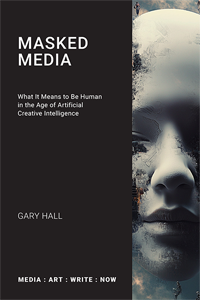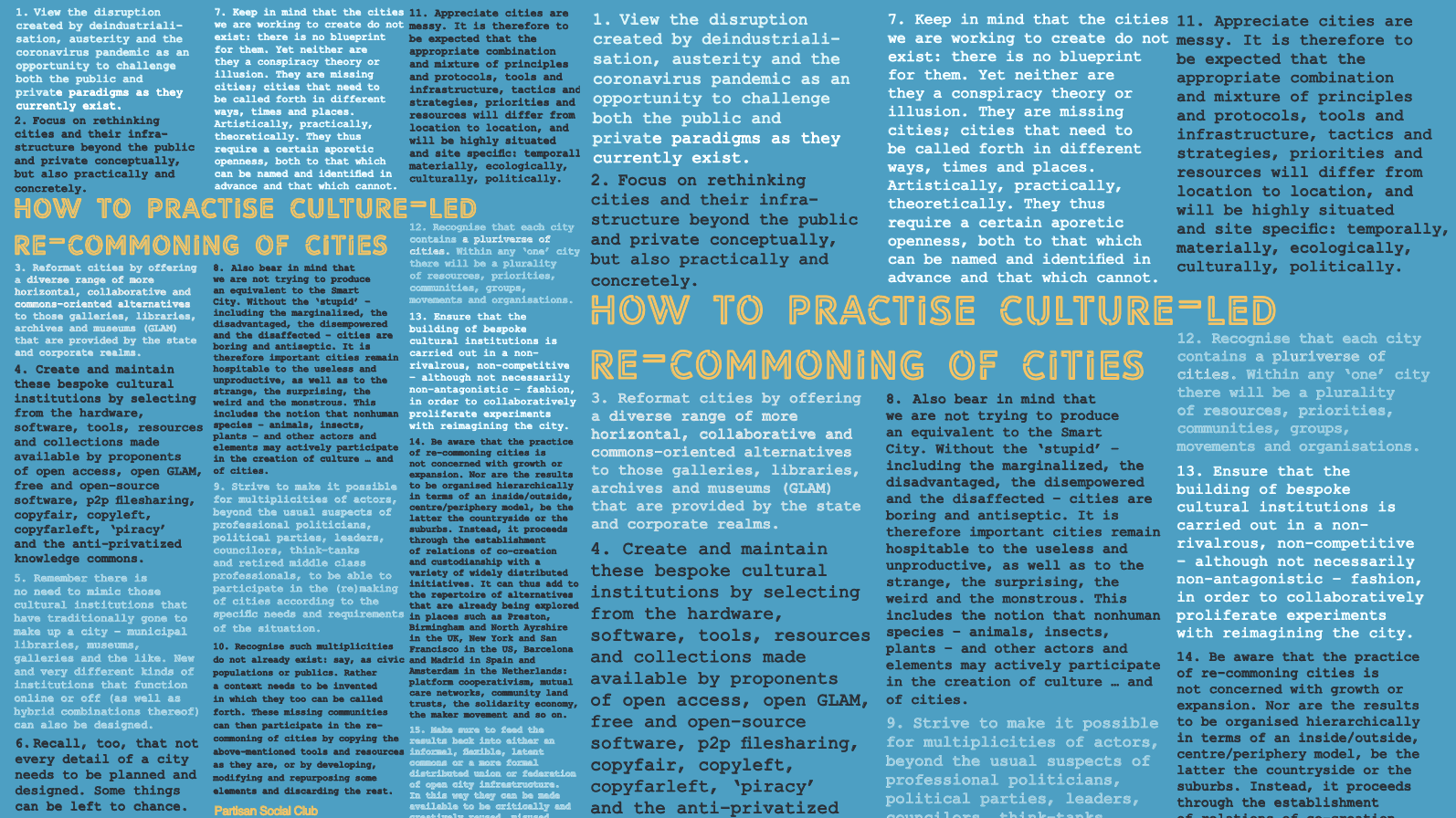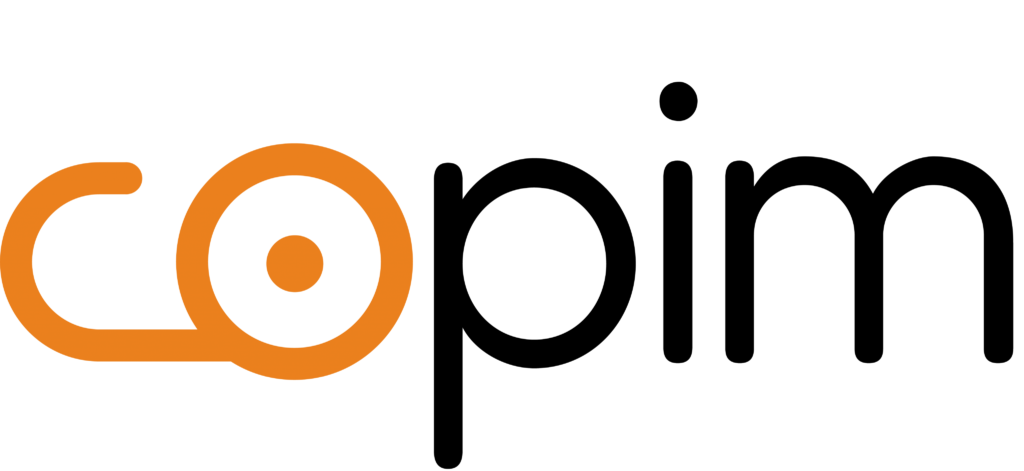Paper - the most radical technology of all?
 Thursday, August 5, 2010 at 8:30PM
Thursday, August 5, 2010 at 8:30PM Media Gifts, the book, concludes (if that is the right word to use about an open, distributed, multi-platform, multi-locational, multiple identity book) with a project that has something of an odd status in relation to the others. This is a text on the performance artist Stelarc called ‘Para-site’.
Stelarc experiments with issues concerning the relation between the human, the body, and technology, including new information and communication technologies. So, for example, his Stomach Sculpture is an art work where an extending/retracting structure, designed to operate in the stomach cavity, was inserted into the body. Brainwaves, bloodflow and muscle signals were amplified and broadcast, and the inside of the lungs, stomach and colon filmed and screened - all of which served to highlight and place in question distinctions between the public and the private as the inside of the body was revealed to be at once both internal and external.
In an introduction we co-wrote to Stelarc Mechaniques du Corps/Body Mechanics, a retrospective catalogue for his exhibition at Centre des Arts, Enghien-les-Bains, France, April, 2009, Joanna Zylinska and I argued that Stelarc can best be understood in terms of his self-declared posture of indifference – his desire not to control the performance so much as let it unfold. (So, as is the case with these media gifts projects – although of course our work is very different: for one thing I’m nowhere near as physically brave as he is, especially when it comes to the prospect of pain - Stelarc wouldn’t conduct his artistic experiments with some fixed results or intended outcomes in mind. Rather he would want to remain open to the new and unexpected.)
But Stelarc’s ‘posture of indifference’ can also be read as being ‘in–difference’, as an opening of oneself to what is not in one (e.g. technology). In short, in-difference becomes an hospitality toward an infinite alterity (in the Levinasian/Derridean sense). It’s also a bodily passivity, a letting oneself be-together-with-difference, with-technology.
It’s worth emphasizing that in saying this, Zylinska and I were not referring to the pairing of two separate entities: the ‘human’ and ‘technology’. For us, human agency and human corporeality is always reliant upon, connected to, and becoming with, tekhnē.
As I put in ‘Para-site’, what Stelarc repeatedly demonstrates is that technology is both fundamental to, and a disturbance of, our sense of the human. The body’s relation to technology is not therefore one of opposites, in which an original, natural, unified human self or identity comes into contact with an external, foreign, alien technology which it can use as a tool or bodily prosthesis, the skin acting as a boundary line to divide and separate the two. Technology is not simply external. ‘Technology is what defines being human’, for Stelarc.’ It’s not an antagonistic alien sort of object, it’s part of our human nature. It constructs our human nature.’ This means that, in the words of Jacques Derrida, ‘there is no natural originary body’, since:
technology has not simply added itself, from the outside or after the fact, as a foreign body… this foreign or dangerous supplement is “originarily” at work and in place in the supposedly ideal interiority of the “body and soul”. It is indeed at the heart of the heart.
(Jacques Derrida, 'The Rhetoric of Drugs', Points... Interviews, 1974—1994 (Stanford, California: Stanford University Press, 1995) pp.244-5)
What Stelarc performs with his investigations into how different developments in technology - robotics, the Internet, virtual reality systems, prosthetics, medical procedures - alter our conception of the human and of the human body, is the way in which technology escapes the control of its inventors to produce unseen and unforseeable changes and possibilities; and thus a future - for the self, the human, for the body and for technology - which can be neither programmed nor predicted.
From this perspective Stelarc’s indifference appears as a far more responsive and responsible way of undertaking an art project. For if you perform in expectation, the actual performative aspect of the performance collapses. Art practice – and the practice of the writer, philosopher or theorist, I would argue - then becomes nothing more than an execution of a programme already decided and mapped out in advance; whereas, as Stelarc says, quoting Wittgenstein, ‘Thinking happens [on] the paper on which you write’. Whatever happens, in other words, only happens in and through the actual performance.
So, when it came to producing my own project on Stelarc, ‘Para-site’, what I did was weave short passages of my own text, together with some passages taken from Stelarc’s writings, to form a kind of non-linear work designed to enter into a prosthetic and parasitical relationship with its ‘host’ subject: Stelarc.
The thinking behind this was that in order to understand Stelarc’s performances we, too, need to adopt a ‘posture of in-difference’, and experiment with inventing new techniques of analysis which are capable of responding to Stelarc’s performances with an answering in-difference. Like Stelarc, then, we too have to create an hospitable ‘space for an encounter with... what is radically different’, as Zylinska puts it, and rethink the nature, boundaries and performance of the written text accordingly.
Now, because a version had already appeared in ink-on-paper form, I hadn’t initially thought about including ‘Para-site’ in the media gifts series. It was only much later that I began to consider the idea. It is certainly tempting to think I might update this project in order to include it in the series: not only in terms of its content, by referring to Stelarc’s ‘Ear on Arm’, which he’s partially realised now, as well as a number of other works he’s completed since I wrote ‘Para-site’. I might also update it in terms of its form by using the kind of new media I’ve been talking about – internet TV, wikis, peer-to-peer file sharing.
In the end, however, I have decided not to do this. Partly because, while experimenting is closely aligned for me with most kinds of critical consciousness, I don’t want to suggest there’s something intrinsically radical about using new technology for such performative experiments. In fact, the impact or effectivity of such new media experimentation is often less – precisely because a lot of these strategies around open access, free, libre content and free circulation have become ‘ordinary’ thanks to the sheer ubiquity of new technology.
Derrida made a similar point when explaining why he didn’t continue with the non-linear textual experiments he performed in books such as Glas and The Post Card after computers and software became relatively commonplace:
It was well before computers that I risked the most refractory texts in relation to the norms of linear writing. It would be easier for me now to do this work of dislocation or typographical invention – of graftings, insertions, cuttings, and pastings – but I’m not very interested in that any more from that point of view and in that form. That was theorised and that was done – then. The path was broken experimentally for these new typographies long ago, and today it has become ordinary. So we must invention other ‘disorders’, ones that are more discreet, less self-congratulatory and exhibitionist, and this time contemporary with the computer. What I was able to try to change in the matter of page formatting I did in the archaic age, if I can call it that, when I was still writing by hand or with the old typewriter. In 1979 I wrote The Post Card on an electric typewriter (even though I’m already talking a lot in it about computers and software), but Glas – whose unusual page format also appeared as a short treatise on the organ, sketching a history of organology up to the present – was written on a little mechanical Olivetti.
(Jacques Derrida, ‘The Word Processor’, Paper Machine (Stanford: Stanford University Press, 2005) pp.25-26)
Here, too, then, the responsible decision as to which media to use in these experiments and in what way must be taken in an undecidable terrain. We can’t decide in advance that new media, or IPTV, or internet piracy - or robotics, prosthetics or medical procedures, for that matter - are always and everywhere the political or artistic way to go. As Stelarc’s quote from Wittgenstein neatly illustrates, paper can also be used as a radical, experimental medium to great effect. In fact, such is the ubiquity of new media, that the really radical thing to do today might be precisely to use paper technology.
Which is why, while I do intend to add ‘Para-site’ to the published version of the media gifts series, I’ve decided to leave this particular ‘gift’ in its ink-on-paper form – as a way of emphasizing this.
 Gary Hall | Comments Off |
Gary Hall | Comments Off | 






Reader Comments (1)
Interesting article.. Keep up..